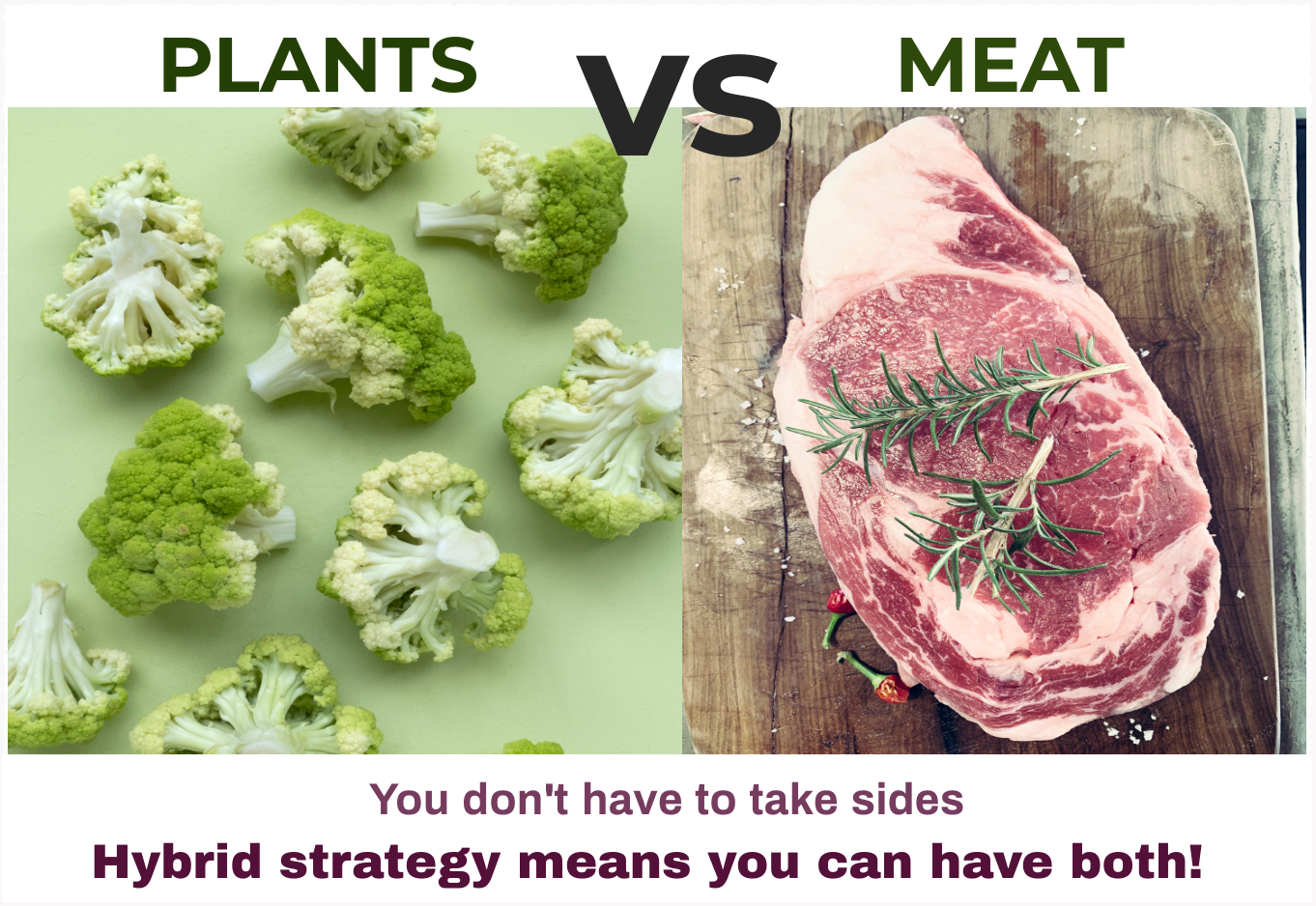
Our new strategy briefing exploring the emerging opportunity offered by “hybrid” products that blend meat and plants has received a lot of attention – as you can see the links at the end of this post.
Amidst all the hype over plant-based foods, it’s good to be reminded that it’s not the only strategy in town, nor the only way to tackle environmental concerns about meat and dairy.
True, many people want to eat less meat and dairy and eat more plants, specifically vegetables. But many consumers don’t want to give up altogether on their favorite everyday foods, nor miss out on the taste and nutritional benefits of meat or dairy. Between these poles, in the grey area where consumers’ best intentions meet their love of meat and dairy, lies the emerging opportunity of “hybrid” products.
“A ‘hybrid’ or ‘blended’ strategy gives flexitarian consumers permission to indulge in favourite foods like meat, dairy and bakery – they can eat them and feel no guilt,” says Julian Mellentin. “And while it’s currently a niche opportunity, it’s already earning companies significant price premiums of up to 140% over regular non-hybrid products.”
It’s early days and a white-space opportunity, but emerging steadily. New Nutrition Business believes that within five years, hybrid products will have a 3%-5% market share in many categories.
Companies already innovating in this area include both start-ups and established businesses such as Perdue, Hormel, Applegate Farms and Finnish bakery giant Fazer.
From meatballs with mushroom to bread with beetroot, hybrid products deliver traditional foods along with a significant portion – at least 20% – of plant-based ingredients. Many successful products, such as Fazer’s vegetable breads, go up to 30% and more.
The terms ‘blended and ‘hybrid’ are starting to be more widely used by product developers and strategists, and plants are increasingly showing up as a prominent ingredient in categories where you wouldn’t traditionally expect to find them. The new emerging blends are:
- Plants + good carbs
- Plants + meat
- Plants + dairy
These blends can be found in many categories including snacking, bread, cakes, burgers, dairy drinks, ice-cream, breakfast cereal and many others.
“A surge of creative product development means that within a few years, a convenient vegetable content in bread and bakery, chips and snacks and many other categories will be everyday and unremarkable,” says Mellentin.
Click on the following links to read more:

